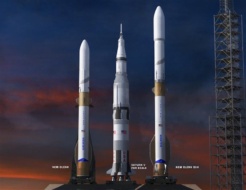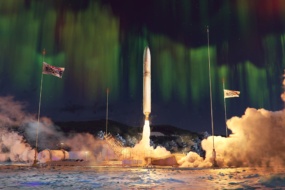China unveiled plans for a fully-reusable Long March 9 rocket configuration Sunday at its 2023 Space Day ceremony in Hefei, China. The CNSA aims to begin testing the vehicle, which looks a lot like Starship, by the late 2030s.
The fully reusable configuration is noteworthy given China has still yet to nail a partially reusable launch, an achievement SpaceX accomplished in 2014.
Pivot: China is building the Long March 9, a three-stage super heavy-lift rocket, to support lunar and deep space missions. When China first began developing the rocket in 2016, the initial plan was to make it fully expendable. Then, in 2022, China pivoted from an expendable rocket to a reusable first-stage design.
The partially-reusable Long March 9 is expected to launch in the early 2030s. The CNSA will begin testing the two-stage fully-reusable rocket configuration shortly after that.
Long March 9 rocket family profile:
- 375 ft tall
- 6100T of takeoff thrust
- Capable of carrying 150T to LEO
Big spender: More broadly, China is ramping up investment in its space and lunar programs. China unveiled concept designs for a lunar lander this year and moved up its first crewed Moon landing to 2030.
10-year head-start: While blueprints for a super heavy-lift vehicle have been flowing out of the CNSA, actual development of the rocket has barely made it off the drawing board. Meanwhile, the US has achieved heavy lift capability with its SLS rocket, and more recently, it has taken steps towards a fully-reusable rocket with SpaceX’s launch of Starship.
Based on Long March 9 timelines, China is more than a decade behind the US in heavy-lift and reusable rockets.
- China also announced plans to build a billion-watt power station in orbit at its Space Day, from the Global Times.




